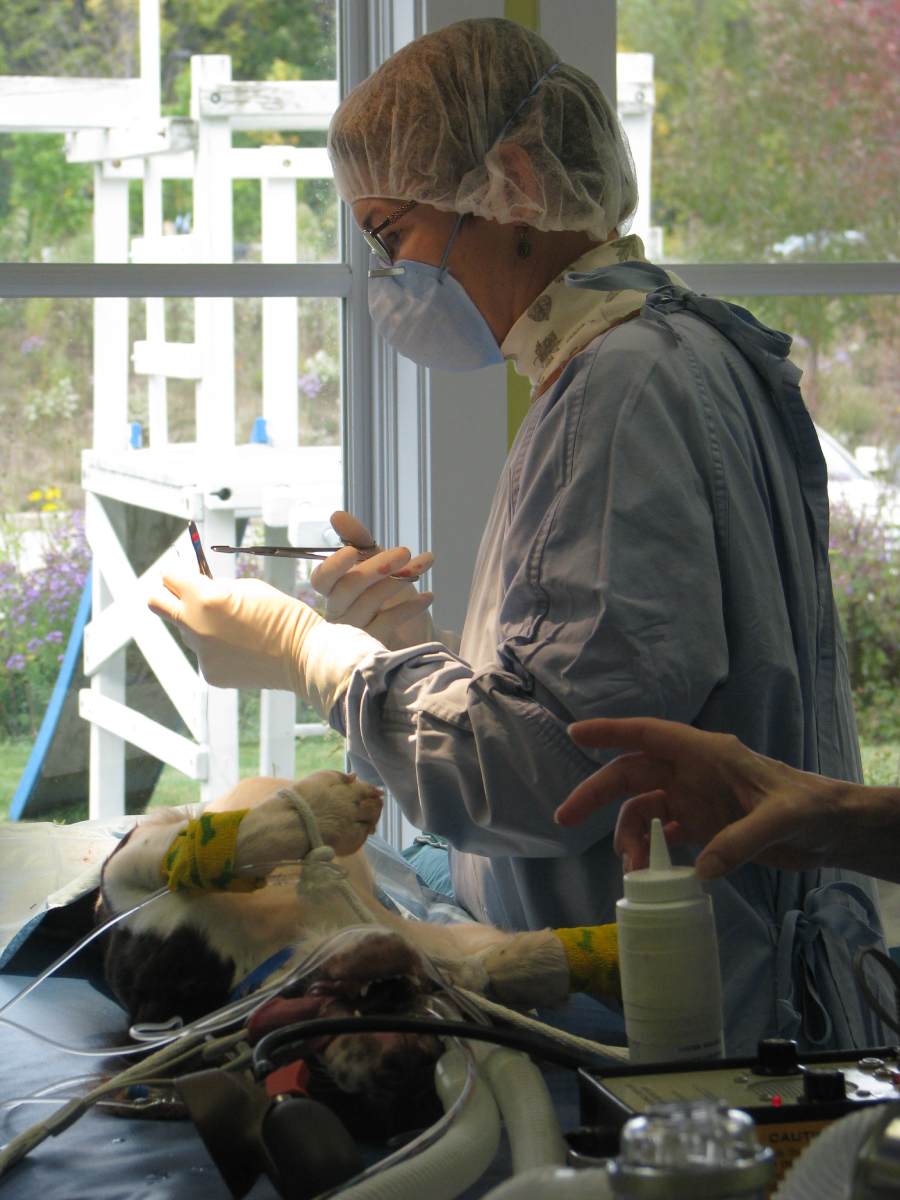Veterinary Services
Pet Spay and Neuter in Grafton, WI
Choose responsible pet ownership: Spay or neuter your pet for a healthier, happier life while preventing overpopulation and euthanasia.
Pet Spay and Neuter
Choosing to spay or neuter your pet is one of the most responsible decisions you can make as a pet owner. Spaying and neutering pets add years of life expectancy and improve the odds that you will have a happy, well-behaved family pet. It also helps to decrease the number of animals in shelters and the number of pets euthanized each year. Nearly 4 million pets in the United States are put down annually due to a lack of homes and behavior problems that could have been prevented by spaying or neutering.
Reasons to spay or neuter your pet:
- Decreased aggressive behavior in both male and female pets
- Decreased desire for pets to roam and find mates. 60% of dogs hit by cars are unneutered males.
- Decreased pet overpopulation and pet euthanasia
- Decreased risk of mammary gland tumors
- Elimination of heat cycles and bleeding
- Elimination or reduction of urine marking and spraying
- Reduced risk of ovarian and uterine cancers
- Reduced risk of prostate cancer and testicular cancer
What does spaying or neutering involve?
Both spaying and neutering are surgical procedures that prevent an animal from reproducing. Spaying is performed on female animals and typically involves surgically removing the uterus and ovaries. Some spaying procedures remove only the ovaries, especially when surgery is done laparoscopically. Neutering is done for male animals and involves removing the testicles.
Our veterinarians utilize advanced pain management protocols for every surgery we do, including spaying and neutering. We also do our utmost to give your pet as pleasant an experience as possible via low-stress handling and anti-anxiety medications. The last thing we want is for your pet to have a scary experience the first time he or she stays at the animal hospital since this will make every subsequent visit more stressful.
We will talk with you before your pet’s procedure about options such as ECG screening and the use of the surgery laser during surgery and our therapy laser afterward. All patients have pre-anesthetic blood testing and go home on pain medication. For cat and dog spays, dog neuters, and cat declaw surgeries, we will need you to pick up pain medication to start beforehand. “Preemptive pain management,” where pain is stopped even before it starts, is more effective than waiting until after surgery. We also use local anesthetics for every procedure, which helps greatly to make incisions more comfortable and reduces licking and chewing at the surgery site.
When your pet is spayed or neutered we have the opportunity to perform other procedures that also require anesthesia. If your dog is a breed with a risk for hip dysplasia, for example, we would recommend taking an x-ray of the hips. Hip X-rays involve positioning the patient on their back with the legs pulled straight back, which is a very uncomfortable position. It’s almost impossible to take good hip X-rays in an awake animal, so we try to take advantage of the fact that we will have your pet anesthetized to get this done. If we know a pet has less-than-ideal hip conformation then we can intervene early to slow the development of hip arthritis and prevent pain for your pet.
Other options, depending on the patient, would include stomach tacking for dogs at risk for GDV (bloat); extraction of retained deciduous (baby) teeth in small dogs; soft palate resection and stenotic nares surgery for brachycephalic breeds such as bulldogs; cherry eye repair; dewclaw removal in dogs or declawing in cats; or ectropion or entropion repair. We will discuss these with you prior to your pet’s surgery day.
Please watch our videos on spaying and neutering before you bring your pet in for surgery. This makes it easier for you to make decisions about what optional items you want for your best friend during his or her admission to the veterinary hospital.


